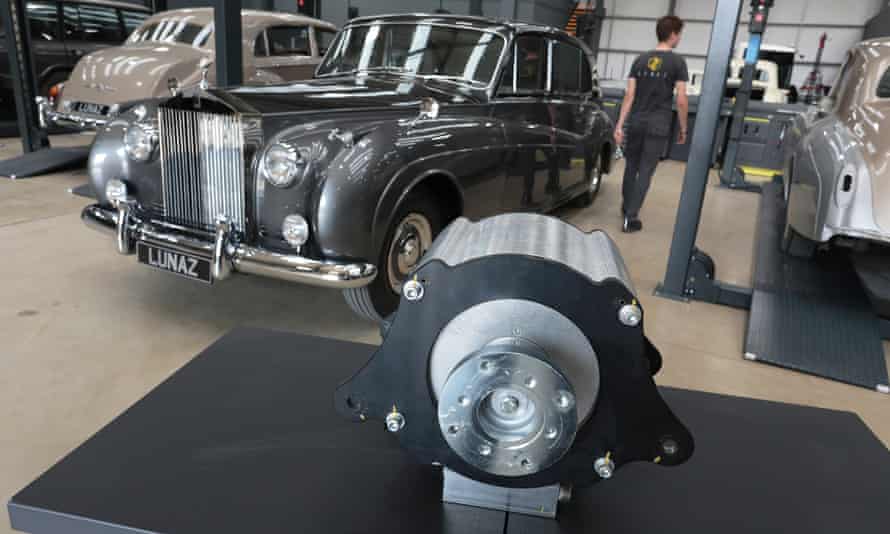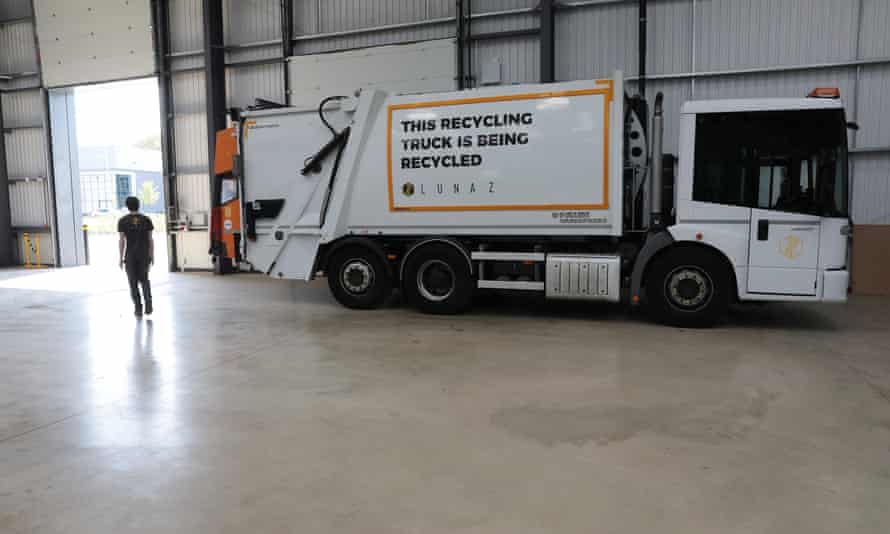Snaps of David Beckham in expensive cars were a tabloid staple during the footballer’s days as a star player, but now his interest has taken a surprising turn: bin lorries.
The former Manchester United and Real Madrid midfielder has taken a 10% stake in Lunaz, a Silverstone-based company that electrifies classic cars from Rolls-Royce, Jaguar and Range Rover. Now it hopes to take the same engineering logic and apply it to refuse trucks and other specialist commercial vehicles, giving them a new lease of life in the transition away from fossil fuels.

The company is part of a small but growing trend of the new battery economy: ripping out polluting engines and installing batteries and electric motors with zero exhaust emissions.
The attraction for Beckham became clear during a Guardian test drive on Wednesday afternoon alongside the famous Silverstone race track in the well-upholstered back of a 1961 Rolls-Royce Phantom. Electric motors may lack the engine roar beloved of petrolheads, but the smooth, quiet ride they offer is well suited to the more rarefied atmosphere of chauffeur-driven luxury. At first glance the plush interior could have been hand-upholstered 50 years ago, but wooden charge and power dials tell a different story.
New cars powered solely by petrol or diesel engines will be banned by 2030 in the UK, but the government is unlikely to order classic cars off the road, whatever their emissions, while London’s ultra-low emissions zone exempts historic vehicles. Yet there is still growing demand for upgrades in the car market. Workshops are springing up around the country that cater to this new class of customer as batteries finally reach the point where they can be slotted in to older models.
The technology is there, but financially, it is likely to be some time before conversions of mass-market cars are within reach. Lunaz charges for classic models start at £245,000 for a Range Rover, putting it within the reach only of the very wealthy. For a historic Rolls-Royce those prices are £350,000 and upwards – very far upwards, judging by the range of bespoke options on offer.

One or two new electric motors take up much less space than an engine, allowing Lunaz to squeeze in custom-made batteries and whatever newer technologies customers need, from air conditioning to electric windows, phone chargers and in-built TVs.
Other companies take a different approach, buying parts such as batteries secondhand from the few electric cars that make it to the secondhand market or that are written off in crashes. Electrogenic, a classic car converter based in Oxfordshire, has said prices can start at £30,000 (albeit rising in line with customer requirements). Another, Swindon Powertrain, quotes about the same for converting an old Mini.
You could convert a Rolls-Royce Phantom, or for roughly the same price you could get a bin lorry. The uses are probably very different, but the thinking is surprisingly similar, according to David Lorenz, who founded Lunaz alongside Jon Hilton, who won the Formula One world championship three times as Renault’s technical director.
“When you take these vehicles you realise the new electric vehicle alternative comes at a higher price with all the same components,” says Lorenz, standing beside the skeleton of a bin lorry that was built in 2011 to a diesel standard that will be rapidly ruled out of city use.
Retaining many of the bin lifting components and renovating others means the cost to a local council of upgrading to electric can be 40% less than buying a new diesel version, Lorenz says. On top of that, electricity is less than a third of the price of the energy equivalent in diesel, meaning total cost of ownership gains could be very attractive.
Bin lorries are particularly suited because of their short and predictable routes – the distance between charging points is still a limiting factor preventing widespread use of electric goods lorries. There is easily space to slot in six roughly car-sized battery packs where engine, fuel tank and exhaust cleaning technologies used to be.
Lunaz only began in 2018, and the new Silverstone location should be able to handle about 120 cars a year. A larger facility due to be opened soon will deal with trucks, and Lunaz hopes to be upgrading 4,000 vehicles a year by 2028.
Beckham is not the only investor whose interest has been piqued: others on board include the Daily Telegraph owners, the Barclay family, the property billionaire Reuben brothers, who came second in the Sunday Times list of Britain’s wealthiest, and Alexander Dellal, a scion of a family of property investors. The size of their investments was not disclosed.
Sign up to the daily Business Today email
Lunaz and Beckham’s representatives declined to comment on whether the footballer – previously photographed behind the wheel of a succession of Rolls-Royce, Bentley and Porsche models – has himself upgraded one of his collection to electric technology.
Costs are still prohibitive, but they are dropping. Lorenz says demand is high and electric vehicle conversions will have to play a big part in the transition away from fossil fuels.
“We’ve got to get out of the mentality of ‘just buy it new’,” he says. “There are 2bn cars on this planet. Every one of them can be converted to electric.”